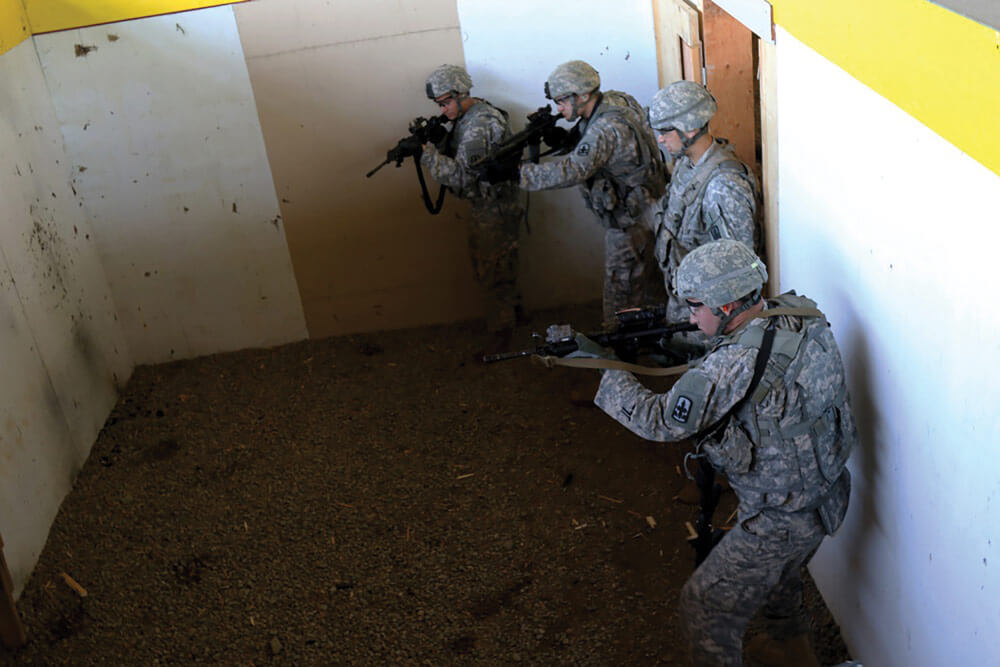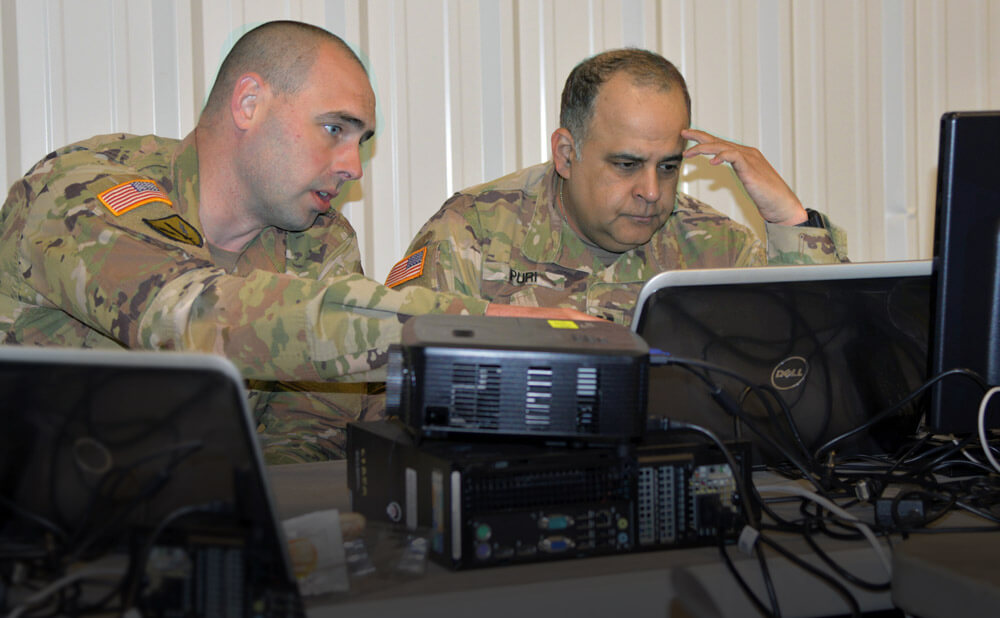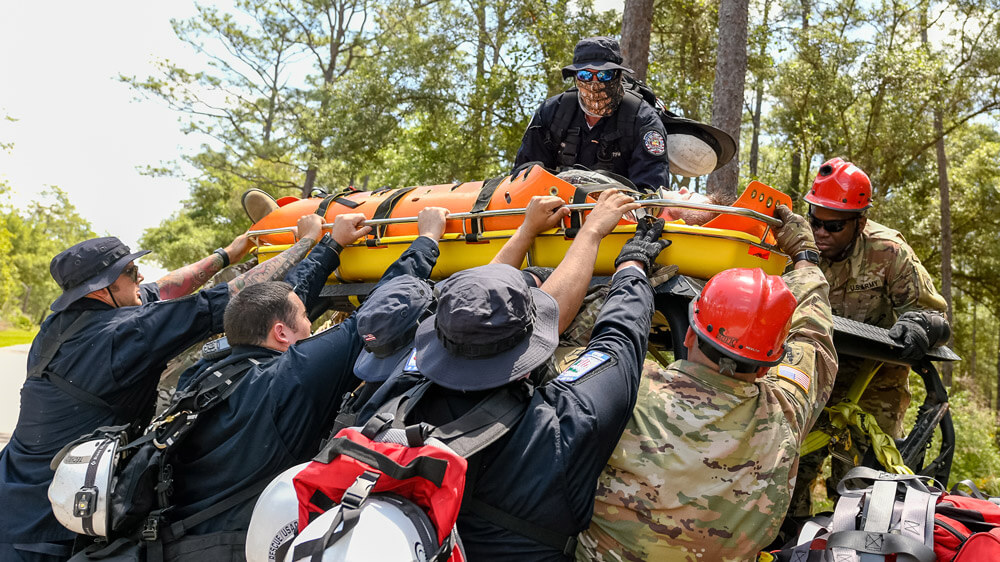Alaska National Guard
By SGT David Bedard,
For Alaska Army National Guard SGT Christopher Radach, close-quarters combat in an urban environment is a deadly serious business.
The veteran of six combat tours with the Marine Corps in Iraq and Afghanistan knows the challenges of close-quarters combat from firsthand experience, most notably in Iraq during the 2005 Operation Steel Curtain campaign that seized towns on the Iraq-Syria border and aimed to destroy al Qaeda operating in the area.
The insurgents weren’t going to leave the towns quietly, requiring Marines and coalition partners to go block-by-block, house-by-house and room-by-room.
The coalition prevailed, and SGT Radach learned tough lessons he was all too eager to share with fellow Soldiers of A Company, 1st Battalion, 297th Infantry Regiment at the Joint Base Elmendorf-Richardson Shoot House.
The shoot house is little more than a bare-bones plywood building with rooms of different sizes and configurations. The rooms might be locked, requiring a breaching of the door, and each room has targets in unpredictable places.
While in the woods, infantry units enjoy maximum freedom of maneuver due to open terrain. In contrast, operating in a city restricts maneuver to narrow alleyways, streets and buildings.
“Our focus is urban warfare, so we’re working on room clearing and the fundamentals of room clearing while using live fire ammunition,” SGT Radach said. “It’s to get our guys more comfortable and competent in room clearing.”
Because security is key, the teams didn’t speak before breaching the rooms, and they were careful not to brush up against the wall or make any other compromising noises.
When the stack of four rolled up on a room, the fourth Soldier moved to the side of the door opposite the rest of his team. He quietly checked to see if the door was locked. If it was, he raised his M26 Modular Accessory Shotgun System to the deadbolt.
A nod to his team leader signified the No. 4 man was ready to blow the door with a 12-gauge buckshot blast. The team leader nodded back, signifying the rest of the team was postured to enter the room.
The No. 4 man blasted the door, turned opposite the door, and donkey kicked it open, allowing the team leader to throw in an M84 stun grenade through the door. The subsequent blast unleashed the team to enter the room with maximum action, shooting any targets and visually clearing the room.
The team members then shout updates to their fellow Soldiers.
“Left side clear!”
“Right side clear!”
“Check overhead!” the team leader shouted.
“Overhead’s clear!”
“Room’s clear,” the team leader announced.
“Four friendlies coming out.”
The company advanced to the live fire stage at the shoot house after two days of dry- and blank-fire exercises to ensure they were ready for the culminating live fire event.
“Safety is the number one concern,” Radach said. “This is one of the more technical things the infantry does. If a Soldier can do this safely, then that Soldier can do just about anything.”



